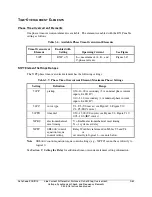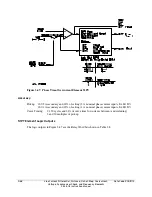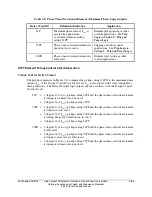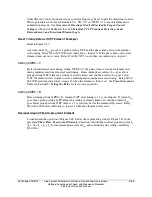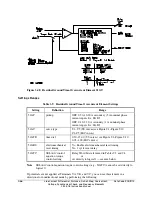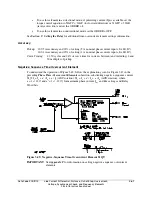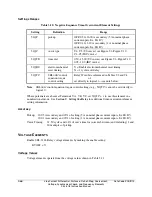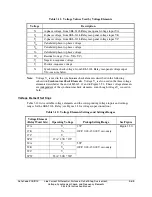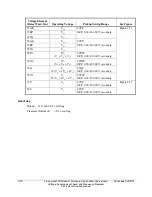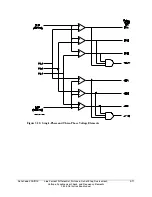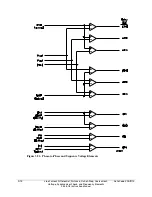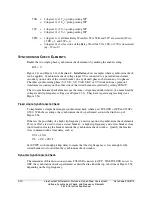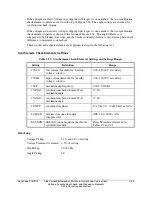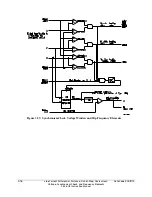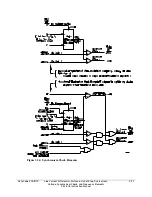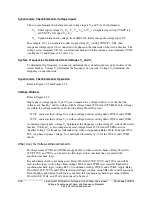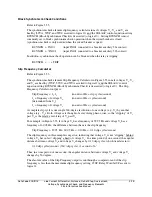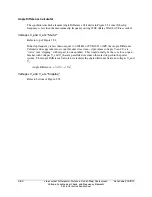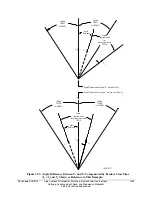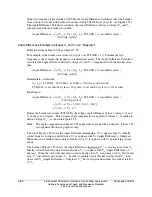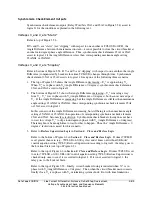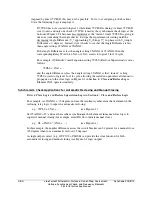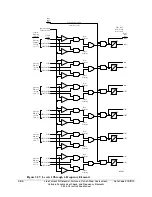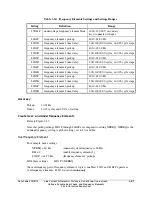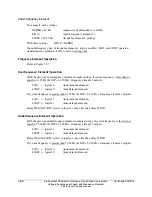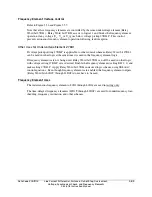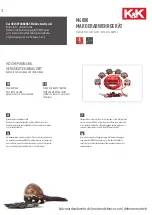
3-74
Line Current Differential, Distance, Out-of-Step, Overcurrent,
Date Code 20011112
Voltage, Synchronism Check, and Frequency Elements
SEL-311L Instruction Manual
59B
= 1 (logical 1), if V
B
> pickup setting 59P
= 0 (logical 0), if V
B
≤
pickup setting 59P
59C
= 1 (logical 1), if V
C
> pickup setting 59P
= 0 (logical 0), if V
C
≤
pickup setting 59P
3P59 = 1 (logical 1), if all three Relay Word bits 59A, 59B, and 59C are asserted (59A =
1, 59B = 1, and 59C = 1)
= 0 (logical 0), if at least one of the Relay Word bits 59A, 59B, or 59C is deasserted
(e.g., 59A = 0)
S
YNCHRONISM
C
HECK
E
LEMENTS
Enable the two single-phase synchronism check elements by making the enable setting:
E25 = Y
Figure 2.11 and Figure 2.12 in
Section 2: Installation
show examples where synchronism check
can be applied. Synchronism check voltage input VS is connected to a potential transformer
secondary on one side of the circuit breaker, on any desired phase or between any two phases.
The other synchronizing phase (VA, VB, VC, VAB, VBC, or VCA) taken from a potential
transformer secondary on the other side of the circuit breaker is selected by setting SYNCP.
The two synchronism check elements use the same voltage magnitude window (to ensure healthy
voltage) and slip frequency settings (see Figure 3.53). They have separate angle settings (see
Figure 3.54).
Fixed Angle Synchronism Check
To implement a simple fixed-angle synchronism check scheme, set TCLOSD = OFF and 25SF =
0.500. With these settings, the synchronism check is performed as described in the top of
Figure 3.54.
If there is the possibility of a high slip frequency, exercise caution if synchronism check elements
25A1 or 25A2 are used to close a circuit breaker. A high slip frequency and a slow breaker close
could result in closing the breaker outside the synchronism check window. Qualify the breaker
close command with a time delay, such as:
SV1 = 25A1
CL = CC + SV1T
Set SV1PU with enough pickup delay to insure that the slip frequency is low enough for the
circuit breaker to close within the synchronism check window.
Dynamic Synchronism Check
The remainder of this discussion assumes TCLOSD is not set to OFF. With TCLOSD not set to
OFF, the synchronism check is performed as described in either the top or bottom of Figure 3.54,
depending on the slip frequency.
Summary of Contents for SEL-311L
Page 6: ......
Page 8: ......
Page 26: ......
Page 54: ......
Page 144: ......
Page 216: ......
Page 252: ......
Page 302: ......
Page 338: ......
Page 480: ......
Page 484: ......
Page 486: ......
Page 502: ......
Page 532: ...12 28 Standard Event Reports and SER Date Code 20010625 SEL 311L Instruction Manual 4 ...
Page 552: ......
Page 554: ......
Page 574: ......
Page 576: ......
Page 596: ......
Page 602: ......
Page 628: ......
Page 656: ......
Page 662: ......
Page 664: ......
Page 688: ......
Page 700: ......
Page 716: ......
Page 722: ......
Page 734: ......


